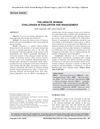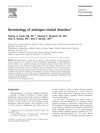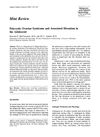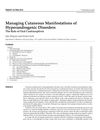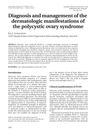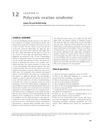Hirsutism: A Comprehensive Update of Embryology, Aetiopathogenesis, and Therapeutic Approach
February 2017
in “
Journal of gynecology and womens health
”
hirsutism Polycystic Ovary Syndrome PCOS adrenal androgen excess thyroid hormone deficiency growth hormone deficiency hyperprolactinemia hyperinsulinemia oral contraceptives ethinyl estradiol drosperinone flutamide ovulation induction insulin sensitizers spironolactone cream finasteride cream estrogen 3β hydroxy steroid dehydrogenase birth control pills spironolactone finasteride

TLDR The document concluded that more research is needed to understand how estrogen affects the enzyme involved in hirsutism development.
The 2017 document provided a comprehensive review of hirsutism, a condition causing excessive hair growth in women, affecting 5-10% of females. The most common cause was identified as anovulation due to Polycystic Ovary Syndrome (PCOS), affecting 6-10% of women of reproductive age. The study found that 25-50% of PCOS patients showed an adrenal androgen excess. Other hormonal causes included thyroid hormone deficiency, growth hormone deficiency, hyperprolactinemia, and hyperinsulinemia. The paper also discussed the embryology of hair growth and influencing factors. The preferred treatment for hirsutism was oral contraceptives containing low dose ethinyl estradiol and drosperinone with low dose flutamide 75mg. Other treatments like ovulation induction and insulin sensitizers may help in achieving pregnancy but do not treat the hirsutism. The role of spironolactone cream and finasteride cream were also discussed. The paper concluded that more research was needed to fully understand the role of estrogen on 3β hydroxy steroid dehydrogenase in the development of hirsutism.
